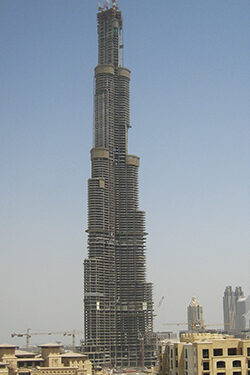Bill Baker,
PE, SE, FASCE, FIStructE, NAE, FREng
Consulting Partner, SOM
Bill Baker is now a structural engineering consulting partner at SOM, where he led the firm’s practice for over twenty years. Since joining SOM in 1981, he has dedicated himself to extending the profession of structural engineering through design, research, teaching, and professional activities.
Baker is best known for the development of the “buttressed core” structural system for the Burj Khalifa in Dubai, the world’s tallest manmade structure. Completed in 2010, the 828-meter Burj surpassed the then-tallest Taipei 101 by more than 300 meters. This unprecedented vertical leap was accomplished by iterative responses to wind-tunnel testing and other creative solutions to constructability. In his talk, Bill will discuss both the precedents that allowed their team to invent a new structural approach, as well as the legacy of “Lessons Learned” a decade after the completion of the skyscraper that still remains the tallest in the world.
Active with numerous professional organizations and institutions of higher learning, Bill Baker has received many honors, including three honorary doctorates; the Gold Medal from the Institution of Structural Engineers (IStructE), the American Society of Civil Engineers (ASCE) Outstanding Projects and Leaders Lifetime Award for Design; the Gustav Magnel Gold Medal from the University of Ghent; the Fazlur Rahman Khan Medal from the Council on Tall Buildings and Urban Habitat; and the Fritz Leonhardt Preis (Germany). He is a Fellow of both the ASCE and the IStructE, and a member of the National Academy of Engineering (United States) and an International Fellow of the Royal Academy of Engineering (United Kingdom). Baker frequently lectures on a variety of structural engineering topics in the U.S. and abroad.
The video begins with Bill Baker's lecture, followed by Q&A with Museum Director Carol Willis, whose introduction to the webinar is included after the discussion.
